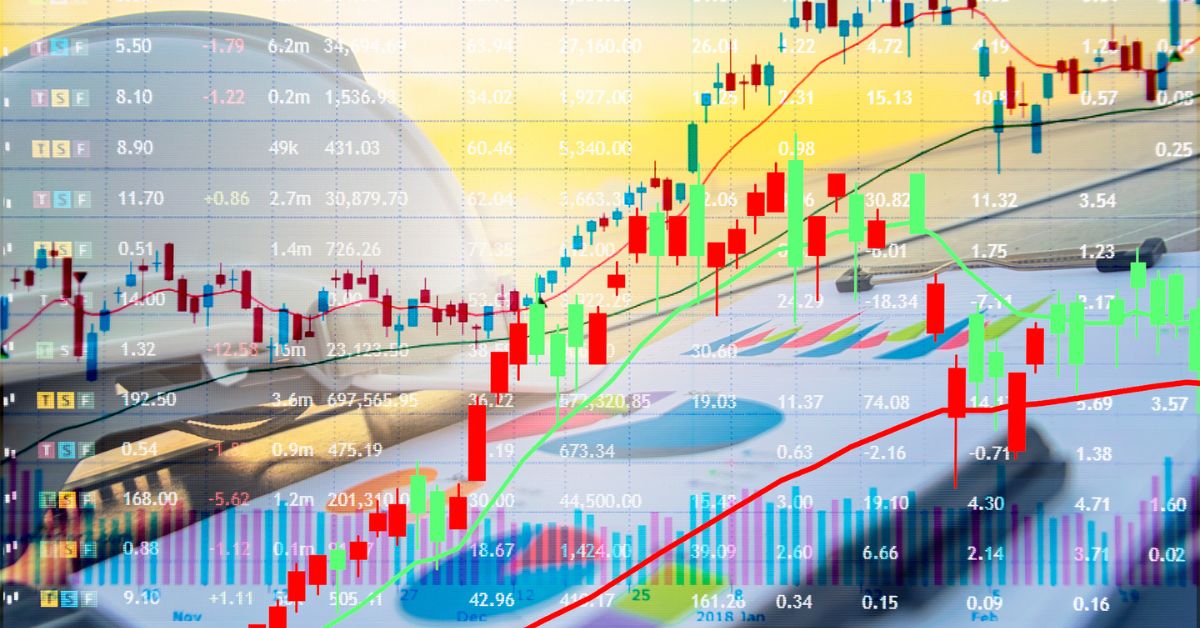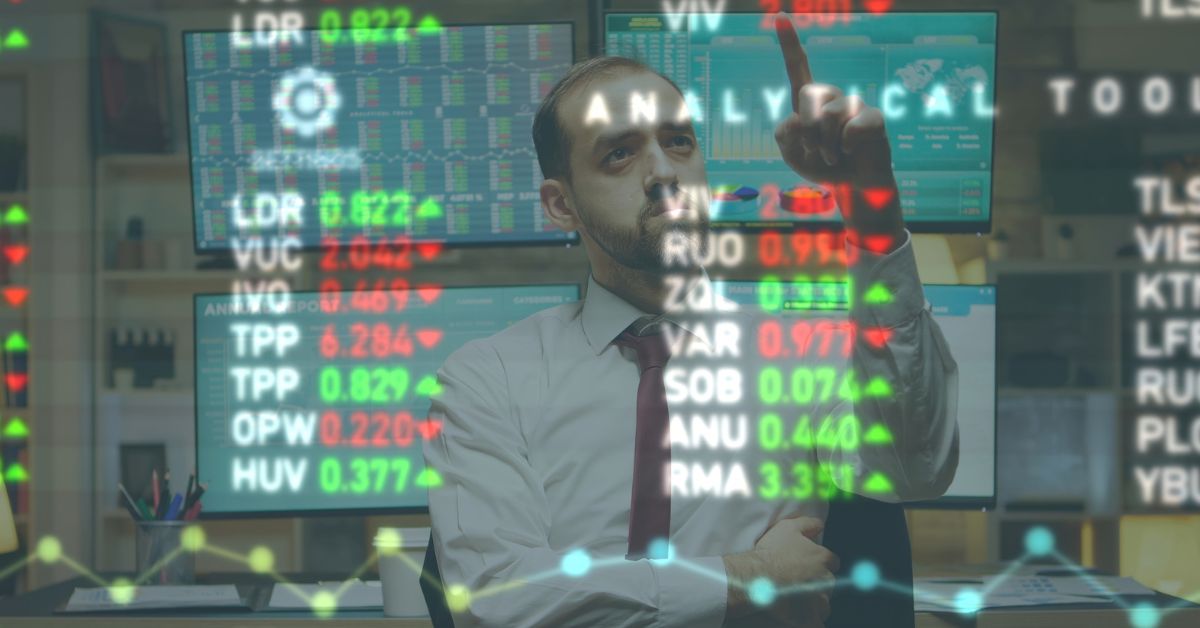Trading in financial markets can be exhilarating but also nerve-wracking. Many traders, both new and experienced, fall into the trap of panic trading. This happens when emotions take over, leading to impulsive decisions that often result in losses. Maintaining composure and making informed decisions is crucial in trading. So, how do I stop panic trading?
This article will explore the causes and consequences of panic trading and provide practical strategies to help you trade confidently and avoid costly mistakes. To avoid this pitfall, it’s essential to utilize reliable resources and tools.
Prime XBT offers a complete range of resources to help cryptocurrency traders stay informed and make rational decisions. It provides robust tools that can assist in developing and sticking to a sound trading plan. So, join PrimeXBT today! Use promo code PRIMEOTT to receive a +7% bonus on your deposit.
What is Panic Trading?

Panic trading occurs when traders make impulsive decisions driven by fear. This often happens during market volatility or unexpected news. It leads to quick, irrational actions that can result in significant financial losses.
Any trader needs to understand panic trading. It is rooted in emotional responses rather than logical analysis. Recognizing when you are panic trading can help you take a step back and reconsider your actions.
Identifying the signs of panic trading will enable you to develop strategies to prevent it. In this way, you can make informed trading decisions without being influenced by temporary emotions.
Common Triggers of Panic Trading
Several factors can trigger panic trading. Such as:
Market Volatility
Market volatility is a major trigger for panic trading. When prices fluctuate rapidly, traders often feel uncertain. This uncertainty can lead to impulsive decisions.
Various factors can cause volatility, including changes in economic indicators and unexpected global events. Traders may react quickly to avoid losses.
However, these quick reactions often result in poor decisions. It’s important to remain calm during volatile periods and use tools like stop-loss orders to manage risk effectively.
Economic News

Sudden economic news can also trigger panic trading. Announcements about interest rates or inflation can cause fear. Traders might rush to buy or sell assets.
This reaction is often based on emotion rather than analysis. Economic news can create a sense of urgency, and traders may feel they need to act immediately.
However, it’s crucial to assess the news carefully. Take time to understand its long-term impact. Make decisions based on thorough research, not immediate reactions.
Personal Financial Stress
Personal financial stress is another common trigger. When traders face financial difficulties, they are more prone to panic, which can cloud their judgment.
Financial worries can make traders desperate to recover losses. They might take bigger risks or trade more frequently. This often leads to further losses.
Managing personal finances is crucial for traders. Keep a separate emergency fund and ensure that trading decisions are not influenced by personal financial pressures.
Fear of Missing Out (FOMO)
The fear of missing out, or FOMO, is a powerful trigger. Traders see others profiting and fear they will miss opportunities, which drives impulsive trades.
Social media and news can amplify FOMO. Traders might jump into trends without proper research. This often leads to poor investment choices.
It’s important to stick to your trading plan. Avoid being swayed by short-term trends. Focus on long-term goals and strategies to maintain discipline.
The Impact of Panic Trading
Panic trading can have serious financial consequences. Some of them are:
Financial Consequences
Panic trading can lead to significant financial losses. Impulsive decisions often result in selling low or buying high. This behavior can quickly deplete trading accounts.
The fear of losing money drives traders to act irrationally. Without a clear strategy, losses accumulate over time, creating a cycle of desperation in trading.
Moreover, panic trading can cause missed opportunities. Traders may exit positions too early, forgoing potential gains. The financial impact can be long-lasting and damaging to portfolios.
Traders must recognize the financial risks of panic trading. Developing a solid plan can help mitigate these risks. A disciplined approach is crucial for long-term success.
Emotional Toll
Panic trading takes a significant emotional toll on traders. The stress of constant decision-making can be overwhelming, and anxiety about losing money leads to emotional fatigue.
Traders often experience feelings of frustration and regret. After making impulsive trades, they may second-guess their decisions. This emotional strain can result in burnout over time.
Additionally, panic trading can affect personal relationships. High-stress levels may lead to irritability and withdrawal, and family and friends may feel the impact of trading-related stress.
To combat this emotional toll, traders should prioritize self-care. Taking breaks from trading can help manage stress. Maintaining a balanced lifestyle is crucial for emotional well-being.
Long-Term Effects on Trading Habits

Panic trading can have detrimental long-term effects on trading habits. Over time, a cycle of fear and impulsiveness may develop, hindering overall trading performance and decision-making.
Traders may start to rely on emotions rather than logic. They might frequently change strategies based on fear or anxiety. This inconsistency can prevent traders from achieving their goals.
Additionally, panic trading can create a lack of discipline. Traders may abandon their trading plans in times of stress, and this erosion of discipline can be difficult to recover from.
To counteract these long-term effects, traders should focus on education. A good understanding of market dynamics can help you build confidence. Sticking to a well-defined trading plan is essential for improvement.
Damage to Confidence
Panic trading can significantly damage a trader’s confidence. Frequent losses create self-doubt and hesitation in decision-making, which can lead to a negative feedback loop.
Traders may become overly cautious after experiencing losses. This can prevent them from executing their strategies effectively, and the fear of further losses can lead to missed opportunities.
The cycle of panic trading can erode a trader’s belief in their abilities. They might start second-guessing their analysis and strategies. This can result in a lack of commitment to their trading plans.
To rebuild confidence, traders should reflect on past successes. Recognizing their strengths can help restore belief in their skills. Developing a consistent trading routine can also enhance confidence over time.
Recognizing the Signs of Panic Trading
Recognizing the signs of panic trading is crucial for improvement. Awareness allows traders to intervene before impulsive decisions occur. Here are some key indicators to watch for.
Sudden, Impulsive Decisions
One major sign of panic trading is making sudden decisions. Traders may buy or sell assets without proper analysis. This impulsivity can lead to unfavorable outcomes.
It’s essential to take a moment before acting. Pause to assess the situation before making trades. Developing a habit of reflection can help reduce impulsive actions.
Frequent Checking of Stock Prices

Traders often check stock prices excessively during the panic. Constantly monitoring prices can create anxiety and pressure. This behavior can lead to hasty trading decisions.
Setting specific times to check prices can help. Limiting screen time reduces emotional reactions to market changes. Maintaining a healthy trading routine is key to reducing panic.
Feeling of Urgency
Another warning sign is a strong sense of urgency. Traders may feel compelled to act immediately, and this feeling often stems from fear rather than logic.
It is important to recognize this urgency. Traders should remind themselves to stick to their trading plans. Taking a step back can help them regain a sense of control.
Ignoring Pre-Set Trading Plans
Ignoring pre-set trading plans is a clear sign of panic trading. Traders may deviate from their established strategies, leading to irrational decisions that result in losses.
Having a clear plan is essential for success. Regularly revisiting and refining the plan can help. Staying committed to the plan reduces the influence of panic.
Recognizing these signs is the first step to overcoming panic trading. Traders can develop strategies to manage their emotions better. Awareness leads to more disciplined and rational trading practices.
How Do I Stop Panic Trading
Implementing effective strategies can help traders stop panic trading. These strategies focus on emotional management and disciplined decision-making. Here are some practical approaches to consider.
Develop a Solid Trading Plan
Developing a solid trading plan is essential for successful trading. A well-defined plan outlines your goals, strategies, and risk tolerance. This clarity helps you maintain focus, especially during market fluctuations.
Your trading plan should include specific entry and exit points for trades. This guidance reduces the risk of emotional decision-making when panic sets in. Define criteria for entering a trade, such as technical indicators or fundamental analysis.
Additionally, exit strategies should be established to protect profits and minimize losses. Regularly review and adjust your plan as market conditions change. This adaptability ensures that your trading plan remains relevant over time. A solid plan will enhance your trading discipline and decision-making skills.
Set Realistic Goals
Setting realistic trading goals is crucial for long-term success. Avoid aiming for quick and unattainable returns, as this can lead to panic. Instead, focus on achievable, incremental objectives that build confidence.
Break larger goals down into smaller milestones. This approach helps maintain motivation while reducing pressure to perform. Celebrate these small achievements to reinforce positive trading behavior.
Consider using the SMART criteria for goal-setting: Specific, Measurable, Achievable, Relevant, and Time-bound. This structure provides clarity and direction in your trading journey.
Assess your progress regularly and adjust goals as needed. By setting realistic goals, you can create a sustainable path toward success without unnecessary stress.
Use Risk Management Techniques

Implementing effective risk management techniques is vital for controlling potential losses. Start by determining the amount of capital to risk on each trade. A common guideline is to risk only a small percentage, typically 1-2% of your total account balance.
Utilizing stop-loss orders is essential for limiting losses during market volatility. Set these orders at a predetermined price to automatically exit a trade. This strategy prevents emotional decision-making when fear arises.
You can also enhance your risk management approach with tools from the On Tilt Trading Store, such as a stop loss calculator. This calculator helps you assess risk before entering a trade, ensuring you stay within your limits.
Diversification is another important risk management technique. By spreading investments across various assets, you reduce the impact of a single loss. Consistent risk management protects your investments and helps maintain a balanced portfolio.
Practice Mindfulness and Emotional Awareness
Practicing mindfulness can significantly improve your trading performance. Mindfulness techniques, such as meditation or deep breathing, help reduce anxiety and enhance focus. These practices allow you to observe your thoughts and emotions without judgment.
Being aware of your emotional state during trading is crucial. Recognize signs of panic or stress and acknowledge them. This awareness enables you to make rational decisions rather than impulsive ones.
Taking breaks when feeling overwhelmed can provide clarity. Step away from the screen to gain perspective and return with a fresh mindset. Incorporating mindfulness into your trading routine fosters emotional resilience and discipline, ultimately improving your decision-making.
Keep a Trading Journal
Maintaining a trading journal is a powerful tool for personal growth and improvement. It allows you to document trades, strategies, thoughts, and emotions. Recording your experiences helps identify patterns and triggers associated with panic trading.
After each trading session, reflect on your performance and decision-making process. This analysis provides valuable insights into your trading behavior. Regularly reviewing your journal can help you learn from past mistakes and successes.
Additionally, tracking your emotional responses can highlight areas for improvement. Use your journal to set specific goals for your next trading sessions. Maintaining a trading journal consistently helps you develop discipline and accountability.
Read More: Trading Stress: A Comprehensive Guide
Bottom Line
Overcoming panic trading is essential for long-term success in the financial markets. Trades can cultivate emotional resilience and discipline if they recognize triggers and implement effective strategies. A solid trading plan, realistic goals, and proper risk management techniques are vital for sustainable success.
If you’re tired of losing money due to panic selling, FOMO, overtrading, and bag holding, consider using the Vestinda trading app. This app eliminates emotional decision-making by utilizing automated crypto trading strategies. The tools can improve your decision-making process and boost your confidence. Embrace these strategies today to transform your trading experience!



